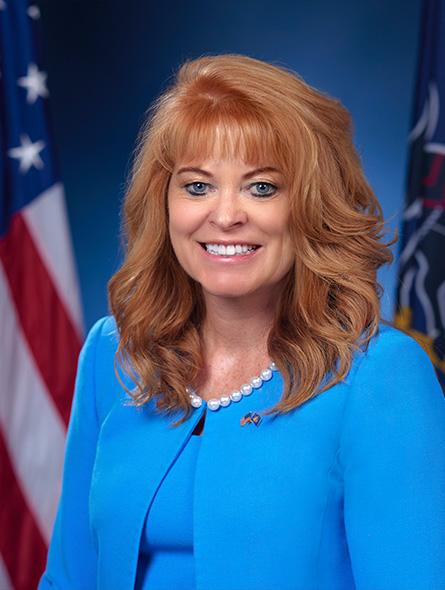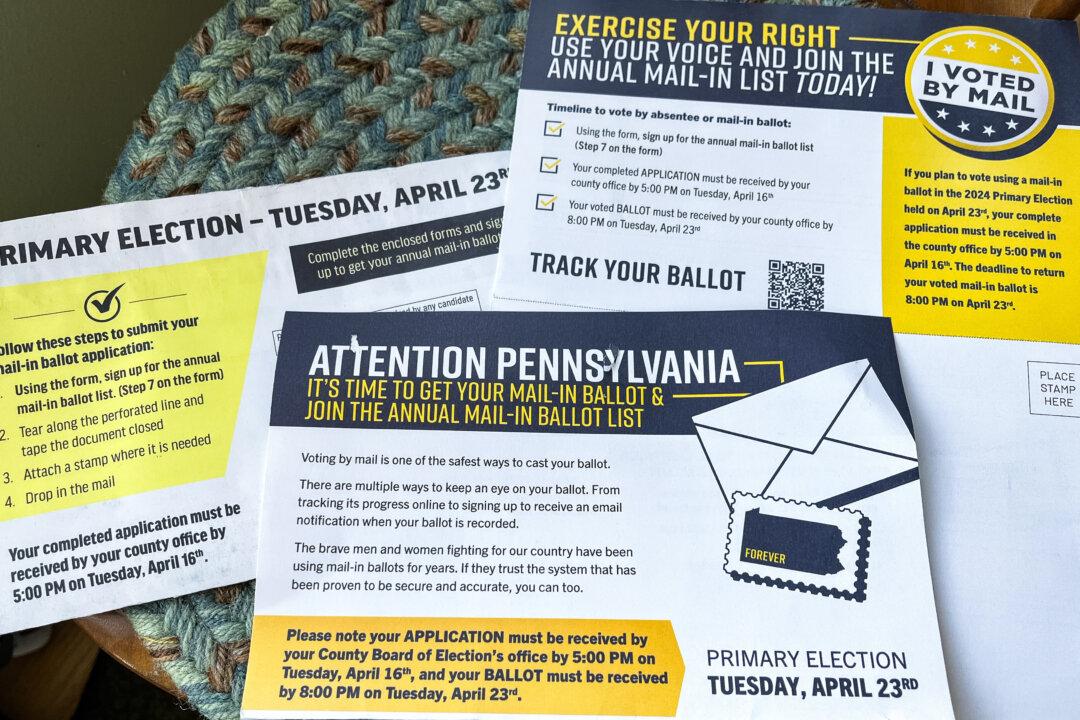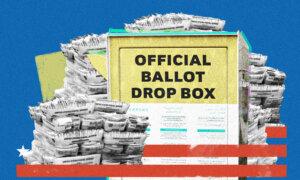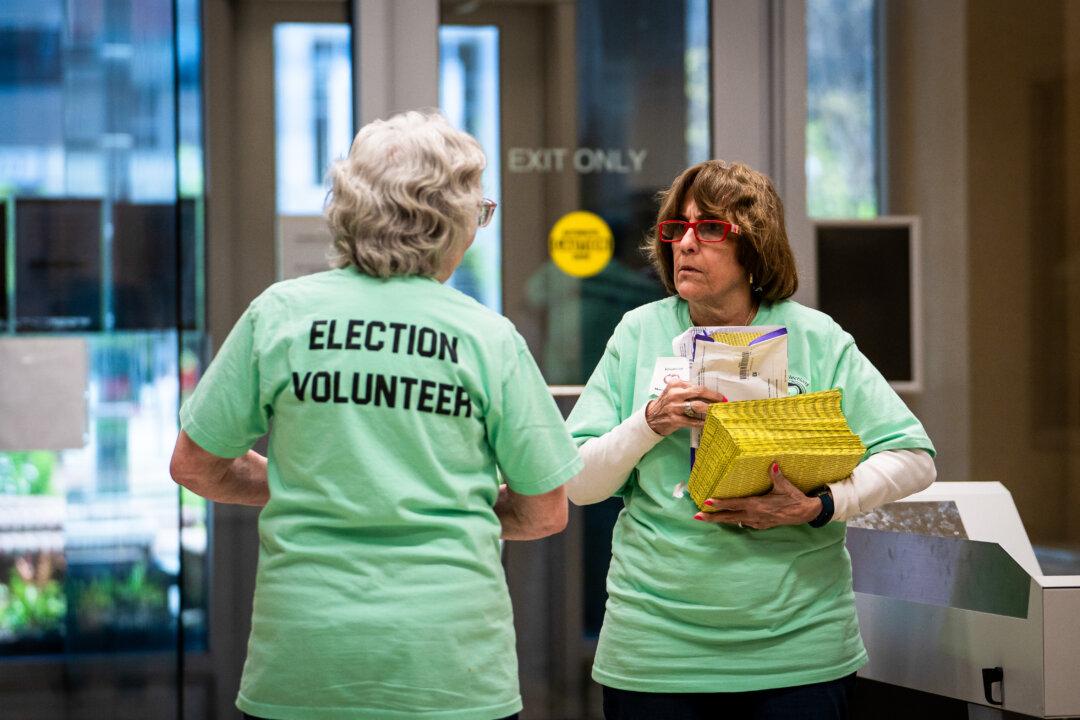Voting has changed in the United States, and the Pennsylvania Republican Party wants voters to change with it by becoming mail-in voters.
Elections used to happen on a single day, and only a minority of people voted by absentee ballot. They were mostly military voters stationed out of the country, and people who were traveling, sick, or otherwise had a reason for not going to the local polls on election day.
Years before COVID-19 came on the scene, Democrats in Pennsylvania talked about expanding absentee voting as we knew it to “no-excuse absentee voting,” where anyone could participate in mail-in voting—no reason needed. In October 2019, the Pennsylvania Legislature passed Act 77, a controversial package of changes to election law that ushered in no-excuse absentee voting.
In 2020, COVID brought social distancing and, with it, a nationwide Democratic push for voters to use the mail-in voting option.
At the time, President Donald Trump urged supporters to vote in person on election day, saying that mail-in voting and ballot drop boxes were less secure. Republicans mostly agreed, but Republicans have mostly lost elections since then.
If You Want to Win, Mail it In

Historically, absentee ballots were an important strategic part of the Republican playbook, Lawrence Tabas, chairman of the Republican Party of Pennsylvania, told The Epoch Times.
And during COVID, when people were hesitant to gather in groups, the state GOP thought the expansion of mail-in voting would have been embraced.
“We began at the state party in March of 2020 … to push and promote the mail-in ballot strategy,” Mr. Tabas said. “It wasn’t until the president came out and said that he was opposed to it, except in Florida, and then the head of the RNC ... and suddenly, the brakes got put on that.”
Adding to the mistrust, former Republican National Committee chair Ronna McDaniel said in an August interview on CBS’s “Face the Nation” that the RNC was suing states that changed rules within the 90 days before the election to allow mail-in voting.
In 2020, Joe Biden received 80,000 more votes in Pennsylvania, but President Trump had more in-person voters.
“Our voters were outnumbered, four to one, almost, on the [mail-in] ballot. And that’s where the extra 80,000 got picked up,” Mr. Tabas said. “Because our people didn’t do it, because the president said ‘don’t trust it.’”
The results were more stark in the 2022 midterm election, where Democrats dominated at the drop-box while most Republicans continued to reject mail-in voting, with just 21 percent of mail-in ballot requests coming from Republicans.
In the governor’s race, Republican Doug Mastriano (2,043,589) beat Democrat Josh Shapiro (1,978,917) by 64,672 votes at the polling booth on election day. However, Mr. Shapiro got more than 1 million mail-in votes compared with Mr. Mastriano’s 187,000; that is, Mr. Shapiro had more than 830,000 more mail-in votes and won the election.
Mail-in Means More Voters
That is why Mr. Tabas has a new mantra: If you want to win, mail it in. He advocated mail-in voting in 2023 and going forward.“Whether the president or anybody else was going to support it, I was out there pushing it. And we made some very strong gains,” Mr. Tabas said, adding that in 2023, Republicans accounted for 41 percent of the state’s new vote-by-mail applications. Of those, 27 percent were brand-new Republicans. It means the mail-in strategy is catching the low-propensity voters and adding to Republican numbers, he said.
While Democrats have long had more registered voters in Pennsylvania, Republicans have been closing the gap. Ten years ago, there were 1.4 million more Democrats than Republicans in Pennsylvania.
“I never thought I‘d say this in my lifetime, but as of April 2, the Democrat voter registration edge over Republicans in this state is 396,000,” Mr. Tabas said. “We’re now down below 400,000, and we’re moving forward. We’ll get down even lower.”
He says that in part because after Gov. Josh Shapiro added automatic voter registration to the process of getting a driver’s license, Republicans have largely been leading those new registrations.
“For three years, we’ve been beat,” Mr. Tabas said. “We’ can’t win without mail-in voting.”
He believes Democrats have hit the wall on the number of low-propensity voters they can add to their totals, and he feels confident there are enough Republicans in Pennsylvania to prevail in 2024, if they all vote.
The party is targeting Republicans who, for at least 10 years, have not gone to the polls. If they haven’t gone four or five blocks to the polling place, the GOP figures it can encourage them to go to their mailbox. And the party supports ballot drop boxes in their neighborhoods. Mr. Tabas is not concerned about security at drop boxes. Voters can just as easily put multiple ballots in the mail rather than a drop box, he said.
“In 2024, mail-in balloting is the law in our state. We’re not going to change that,” Mr. Tabas said. “It’s irrelevant when we’re not winning these elections by obsessing over their tactics. We have to get our people to cast these ballots and vote.”
Candidates Behind Mail-In

The Pennsylvania Primary Election is on April 23, but voters are already casting ballots. In-person absentee voting started March 5 and continues until election day. Voters may request a mail-in ballot until April 16. Now, instead of an election day, it is a voting season that lasts up to 18 days.
This year, former President Trump has come out in support of mail-in voting, but Mr. Tabas would like him to be much more assertive about it.
Republican Dave McCormick is running unopposed in the primary and will face incumbent Democrat Sen. Bob Casey Jr. in the U.S. Senate race.
“One way we can ensure all Pennsylvanians’ voices are heard is by encouraging folks to vote early, which is an essential tool in the toolbox to increase turnout,” Mr. McCormick told The Epoch Times in an email statement.
Pennsylvania Treasurer Stacy Garrity, a Republican, has been encouraging mail-in voting, especially in rural counties. Something could happen on election day to prevent you from voting, she said. That is one benefit of early voting.
“You can get valuable insight into the state of the race when votes are cast early. The Democrats do this really well, which means that they have a huge leg up on resources,” Ms. Garrity told The Epoch Times.
When voters vote before election day, they’re removed from the voter contact list. It saves campaigns money because they can focus on the folks who haven’t voted. It’s a paradigm shift, she said, but she believes mail-in voting is here to stay.
Democrats have the data. They know when and where their turnout is low in a county, and they can use that information to shift resources. If Republicans don’t have that insight, she said, they are going into the battle blind.
“Things aren’t going to change until we start to win,” Ms. Garrity said.
“If you want to win, you’ve got to be on the field. Not embracing mail-ins is like being in a 100-yard dash, and you give your opponent a 50-yard head start.”







